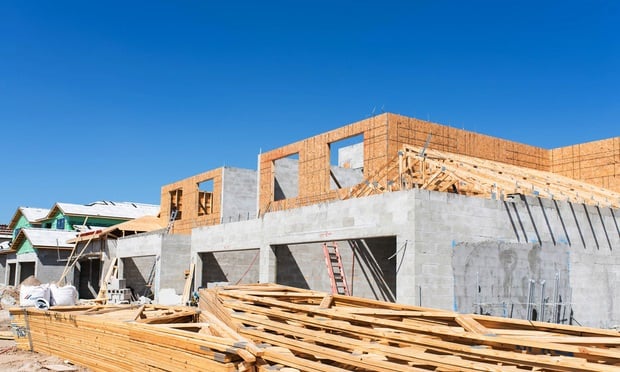LOS ANGELES—The new commissioning requirements instated under the California Building Energy Efficiency Standards are arguably the most impactful for commercial owners and developers, and although they will save in the long term, what happens today? Find out in this EXCLUSIVE Q&A on the subject, where we chat with Nathan Kirby, senior associate and senior mechanical engineer at Syska Hennessy Group Inc.
GlobeSt.com: What changes to the California Building Energy Codes are most impactful to commercial real estate owners and developers?
Nathan Kirby: The new commissioning requirements instated under the California Building Energy Efficiency Standards are arguably the most impactful for commercial owners and developers. As of July 1, 2014, renovations and new construction designs must be authorized by third-party experts to varying degrees. This will range from short in-house reviews all the way to comprehensive functional performance testing.
The commissioning requirements vary by square footage, and are most stringent for new buildings over 50,000 square feet, for which third party commissioning will now be required, including but not limited to design reviews, functional performance testing and reporting.
However, owners of data centers will be affected by a new economizer requirement that will impact all new and replacement HVAC units serving computer rooms. Economizer systems allow for the use of outside air to cool or maintain temperatures in a data center, allowing these centers to reduce the use of their chillers, and therefore save electricity. For existing data centers this requirement may prove particularly onerous depending on how conducive the existing HVAC systems are to these types of upgrades.
While owners should understand the impact these codes will have on their processes, they should also understand that the goal of these codes is to make all commercial buildings more energy efficient, ultimately achieving a net-zero status. These newest updates to the California Building Energy Codes are on track to do just that.
GlobeSt.com: Which building types will be most affected by the updated codes?
Kirby: Data centers will be most affected by the new codes, followed by new construction projects. While all commercial buildings will have to contend with some level of commissioning, data centers in particular will be affected by these and other new requirements.
The new data center requirements, including the aforementioned economizers, are the first of their kind for data centers in California. In the past, data centers were exempt from many energy code requirements. Now, however, they must meet new standards above and beyond the typical practices in this sector of the industry as well as for most other commercial building types.
These new requirements will certainly impact the development of new data centers, and will also affect existing centers, which are constantly updating equipment to accommodate demand for increased data hosting capacity.
In addition, new construction and commercial renovation projects will be affected by the new commissioning requirements I discussed previously. The requirement for third-party commissioning adds another step in the development process, ultimately lengthening the design and possibly construction timelines for each of these projects.
GlobeSt.com: What financial implications will commercial property owners face?
Kirby: Costs to meet the new commissioning requirements can be significant. Developers of larger buildings will need to factor in the cost of hiring a third-party commissioner. These costs can vary, but for buildings such as data centers, the commissioning cost can rival the overall design budget.
In addition, the new equipment upgrade requirements may require a significant financial investment from property owners. Of course, these costs will pay off in the long term due to energy savings, but the initial capital requirement could be a challenge in some cases.
Alternatively, if a data center owner has a facility that does not have the ability to accommodate the new requirements, these owners may be forced to completely retrofit their space or even move their operations to a new location that can accommodate the new requirements.
While these cases are likely to be rare, as energy codes continue to update and become increasingly stringent, moving may become the only option for many owners, leading to potential increased costs.
GlobeSt.com: As a well-respected international engineering firm, Syska Hennessy Group is known for its work developing top energy efficient technologies. Which technology solutions are emerging as the new standard practice as a result of California's new codes?
Kirby: Many of the building technologies that have been explored by top engineering firms over the past few years are now becoming standard in commercial development.
For example, Syska Hennessy Group has been using economizers in data centers for years, as well as other technologies such as electronically commutated fans, adiabatic humidification, and containment strategies. We recognized the energy savings of these technologies quickly. Based on the new California data center requirements, these technologies will become standard in the next two to three years as data centers are forced to adapt to meet their growth and/or replacement needs.
In addition, the practice of daylighting has become the norm in many commercial buildings. This is another technology that Syska Hennessy Group has implemented in our designs for a number of years. The new building code in California requires that lighting systems use daylighting calculations in order to best leverage natural light. Dimmers, timers and zoning are increasingly becoming common practice for new and existing buildings alike, as the energy savings provided by these technologies greatly outweighs the small upfront costs.
GlobeSt.com: What are the long-term benefits of these new codes?
Kirby: Though California's new standards will require owners and developers to pay larger upfront costs, buildings will increasingly become more efficient. The final result will be lower overall operating costs for these same developers and owners.
This has been a practice at our company since its inception - our design team always recommends the best energy efficient equipment upgrades and energy saving technologies to our clients in order to help them stay ahead of the curve. As a result, many of these clients have these technologies in place before they are required by law.
With an aggressive goal of net-zero commercial buildings throughout California, and the country, green building is not going anywhere. Our advice to owners and developers is to push forward and embrace energy savings now - it will pay off in the future.
Continue Reading for Free
Register and gain access to:
- Breaking commercial real estate news and analysis, on-site and via our newsletters and custom alerts
- Educational webcasts, white papers, and ebooks from industry thought leaders
- Critical coverage of the property casualty insurance and financial advisory markets on our other ALM sites, PropertyCasualty360 and ThinkAdvisor
Already have an account? Sign In Now
© 2024 ALM Global, LLC, All Rights Reserved. Request academic re-use from www.copyright.com. All other uses, submit a request to [email protected]. For more information visit Asset & Logo Licensing.








